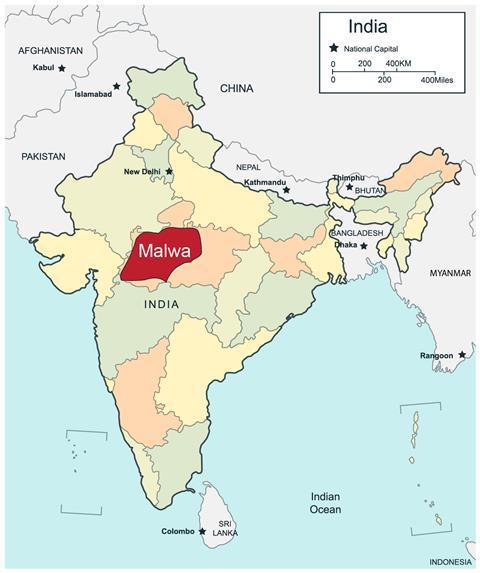The subterranean chemistry that explains India’s groundwater contamination
Published on by Water Network Research, Official research team of The Water Network in Technology
As Vajinder Kumar saw more and more cases of cancer in young and old as he travelled through village after village in the Malwa region in northern India he became increasingly concerned. ‘In one village I saw 30 cases of cancer, in another 25, and many people living with brain and nerve disorders,’ says Kumar, a chemist at Akal University, who has visited more than 100 villages over the past six years, mainly in south-west Malwa. ‘In one centre for children, I saw 500 cases of children severely affected with developmental problems.’ The grandparents and parents of the affected children say there is no family history of such developmental disorders.

Source: Based on a map from © Shutterstock
The historical region of Malwa has some of the highest levels of uranium and arsenic in its groundwater in India
A study by a team of scientists from universities in Punjab, Sikkim and West Bengal, including Kumar, describes how uranium, arsenic and other toxic elements are mobilised in aquifers and surface waters, contaminating drinking water and irrigation in Punjab. It is but the latest in a series of reports on how uranium, arsenic and other contaminants plague a number of regions in the country.
The latest exhaustive review of over 200 reports and analysis of the physical and chemical parameters of the entire Malwa region shows that its groundwater is unfit to drink. Uranium and arsenic in groundwater pose a significant threat to human health, leading to a high prevalence of cancer. Malwa has a relatively high cancer incidence compared with, for example, Aurangabad district in Maharashtra state in central India, which has low uranium levels and a relatively low cancer incidence (exact figures are difficult to come by for the Malwa region).
‘[Malwa] is also known as the cancer belt of Punjab,’ Kumar tells Chemistry World . Many residents also suffer from other conditions linked to water contaminated with excess fluoride and arsenic. Fluorosis is characterised by dental and crippling bone problems, while arsenicosis or arsenic poisoning is characterised by cancers and skin lesions, as well as heart disorders and diabetes. ‘Malwa region needs special and serious attention,’ says Kumar.
Taxonomy
- Groundwater
- Groundwater Assessment
- Groundwater Pollution
- Groundwater Mapping
- Groundwater Quality & Quantity
- Groundwater Resource
- India
- India